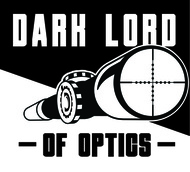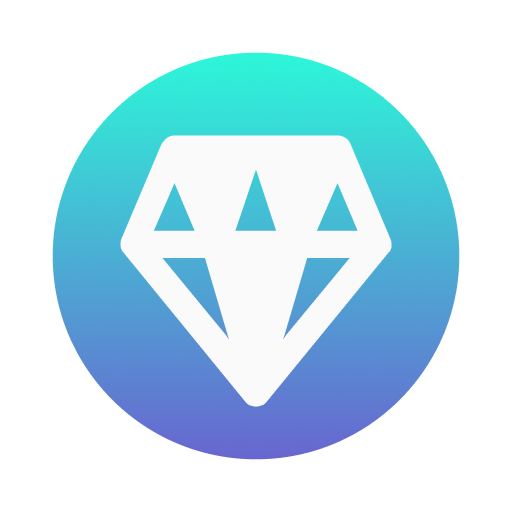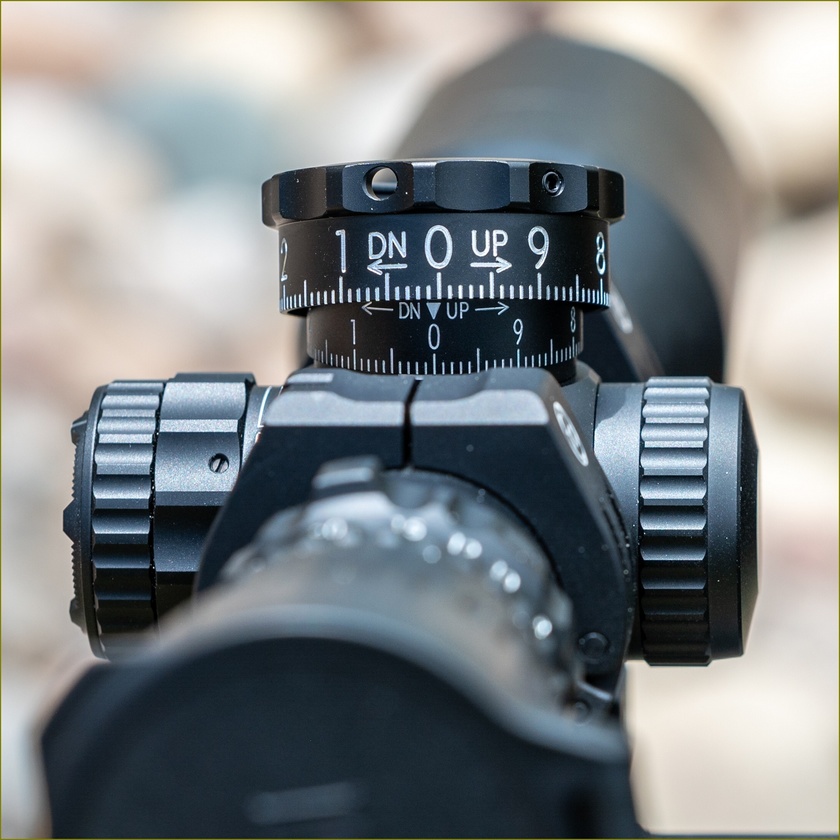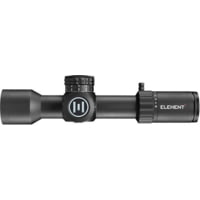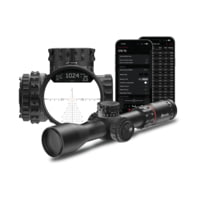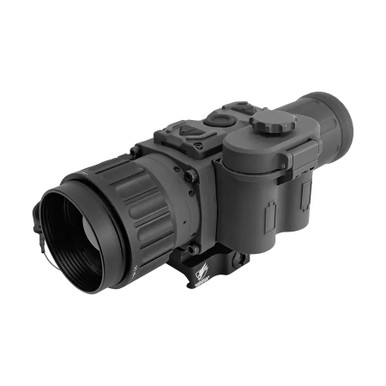March 4.5-28x52 High Master Review and Comparison to Tangent Theta 5-25x56 Page 3
OPTICAL QUALITY
One of the most difficult areas to ascertain with any manufacturer is the quality of glass they use in a given scope model, or rather, how the image looks to the shooters eye when viewing the sight picture through the scope. Traditionally when it comes to optics one generally “gets what they pay for” and hence the higher end optics tend to have the higher end prices; however, with new design technologies we have seen some scopes punch above their weight class. It is impossible to take images through the scope to show the quality of the image to the naked eye, this is because any image capturing device (e.g. camera) also has its own lens system which introduces its own optical aberrations and if the system is better aligned on one scope verses another it may throw off values; therefore, you will not see any through the scope images because I do not want to skew opinion based on IQ of one image over another. So, for this evaluation I took meticulous notes based on my naked eye observations under as best controlled conditions I could get outdoors. Scopes were tested at multiple magnification points: 5x, 10x, 15x, 20x and 25x and a weighted average was obtained for the ratings below.
Optical Assessment criteria (rating 1-10 with 1 being worst and 10 being best):
Resolution (Center) – Advantage Tangent Theta: March – 9.4 | Tangent Theta – 10
Looking through both scopes at distance (1000 yards) you are often dealing with atmospherics that can wreak havoc for any optical system, both these scopes performed very well out to 1000 yards, so well that I had to throw up my resolution chart and evaluate line resolution at close range so atmospherics had minimal effect, when testing in these conditions the center resolution victor became clear, the TT was able to resolve about 5% better than the March throughout much of the magnification range with 10-15x March matching the performance of the Tangent.
Resolution (Edge) – Advantage Tangent Theta: March – 7.7 | Tangent Theta – 9.4
The Tangent Theta had the clear advantage in edge to edge sharpness throughout the magnification range. The sweet spot for the Tangent Theta appeared to be in the 15-20x magnification range while the sweet spot for the March was between 10-25x albeit having less definition than Tangent. March is utilizing a brand new 25° wide angle eyepiece that offers an HD viewing experience with thin outer edges while looking through the scope, but as a result of this wide angle design, one of the side effects is the slight edge distortion which is apparent throughout the magnification range – one of the drawbacks to such enormous FOV and a tradeoff the shooter will have to decide. Keep in mind throughout my testing I found the edges to be perfectly acceptable and was not distracted by the level of distortion.
Color – Tie: March – 8.8 | Tangent Theta – 8.8
If you’ve ever heard the term “it’s all in the eye of the beholder” that in large part describes the experience of color for each of us. It seems our eyes have different sensitivity to different parts of the spectrum and while I tend to prefer “warmer” images and am somewhat put off by “cooler” ones, others see colors differently. For some reason, most Japanese manufactured optics tend to be on the cooler side while many European optics tend to be more neutral to warm. For this reason I have always gravitated towards European optics; however, I am happy to say that March optics in general (not just this scope) have a color contrast that is much more in alignment with their European counterparts. In my test target testing both the March and Tangent were able to reproduce colors very accurately.
Contrast (High) – Advantage March: March – 9 | Tangent Theta – 8.7
My high contrast target has very bright white paper with very black lines, the numbers represent the smallest value I was able to discern. Surprisingly, even though the Tangent Theta was able to resolve better, I was actually able to discern more contrast with the March on the high contrast target.
Contrast (Low) – Advantage March: March – 8.4 | Tangent Theta – 8.3
My low contrast target has a gray background with darker gray lines, the numbers represent the smallest value I was able to discern. This test proved to be almost a tie as both performed very closely to one another.
Clarity – Advantage Tangent Theta: March – 9.3 | Tangent Theta – 9.4
Sometimes known as “pop”, the ability for the image to really stand out and come alive. The Tangent began to fall off close to 20x while the March began to falloff at 15x; however, falloff was very slight and both scopes performed extremely well in this area.
Chromatic Aberrations (CA) – Advantage Tangent Theta: March – 9 | Tangent Theta – 9.6
A hotly debated topic – CA, which is typically seen at the edges between high and low contrast objects in what is termed as fringing and usually comes in a band of color along the green/yellow and magenta/purple spectrum, some are greatly annoyed by this optical anomaly while others insist they cannot see it, one thing to know is it has nothing to do with your ability to hit a target, but can affect the clarity of the target. I tested for both center CA and edge CA. One other area is CA sensitivity with lateral movement off the center of the scope, you can quickly induce CA in these situations which are often rectified by proper cheekweld/eye placement behind the center of the scope. The Tangent Theta is known to be one of the best scopes at managing CA; however, I did notice slight falloff at 20x where it exhibited slightly more CA than at other magnifications. One of the drawbacks to short scope designs is this typically induces more CA, March decided to use their High Master lens system in the 4.5-28 to help control CA and I must say they did an admirable job as I was expecting to see more CA than I was able to observe. Yes, the Tangent still had the edge but the March was not as far behind as I thought it would be given its ultra short design.
Depth of Field (DOF) – Advantage Tangent Theta: March – 8.8 | Tangent Theta – 9.4
The Tangent Theta has extraordinary DOF, objects outside of the plane of focus maintain sharpness and detail for quite a distance, the March is not as forgiving as the full sized Tangent but better than many ultra short scopes.
Mirage (effect) – Advantage Tangent Theta: March – 8 | Tangent Theta – 9
If you hang around Snipers Hide forums long enough and read enough threads about the alpha class scopes, you see some common terms like “splitting hairs” between one scope and another because at the $3000+ level the margin between the scopes begins to become very thin; however, one thing that is often attributed to the Tangent Theta is its apparent ability to “cut through” mirage. For me, the verdict is still out on this claim and I think what most TT owners are talking about is the ability for the TT to define micro contrast regardless of the atmospheric conditions, so when there is heavy mirage, the ability of the scope to define detail helps the brain to perceive this as “seeing through” the mirage. For my testing I had both scopes side by side and my test subject was at 1000 yards during midday, with the scopes set between 10-20x, what I was looking for was how well I could define detail behind the mirage and how much the heat waves would distort that image. The Tangent did have a slight advantage over the March during these tests but I was pleasantly surprised at how well the March performed in comparison.
Field of View (FOV) – Advantage March: March – 10 | Tangent Theta – 8
The new March 4.5-28x52 High Master with its 25° eyepiece has enormous FOV for a long range scope. Many shooters often mistake low magnification for being able to “see” more; however, this is not always the case. For example, while the March has a low magnification of 4.5x, it actually has greater FOV (29.1’) than the ZCO 4-20x50 does at its lowest magnification of 4x (28’), so in reality, even though the March has a higher magnification at its lowest setting you can actually “see” more. For an older design, the Tangent Theta has very impressive FOV numbers and has been one of the best scopes in that category. Neither of these scopes showed any significant tunneling at low magnification. Outside of the specs which offer FOV numbers at the low and high magnification settings, keep in mind that FOV is not always a linear value so extrapolating actual values can be difficult. A couple years ago I began to measure the mrad value once I could detect it and for many long range scopes this is usually around 15x. The following numbers are from center so to get the full FOV value just multiply x2:
Mag March 4.5-28 Tangent Theta 5-25
5x NA 33 mrad
10x NA 20.5 mrad
15x 15 mrad 14 mrad
20x 11.2 mrad 10.6 mrad
25x 9.2 mrad 8.4 mrad
Eyebox – Advantage Tangent Theta: March – 8.2 | Tangent Theta – 9.2
I have seen varied definitions of eyebox in the community, so to be clear, here is my definition which will help you understand what I am looking for – put simply, eyebox is the ability to be able to quickly obtain a clear sight picture when getting behind a scope. Both the March and the Tangent Theta showed decent eyebox forgiveness throughout the magnification range with both getting more finicky at higher magnifications. Tangent Theta is known to be one of the very best with regard to eyebox forgiveness, but I was pleasantly surprised at how well the March performed to just past 20x; however, the March did appear to get more finicky above 20x, still very usable but should be noted.
Twilight Transmission (low light performance) – advantage Tangent Theta: March – 8 | Tangent Theta – 10
I set both scopes to 12x to allow for a larger exit pupil yet still give my eyes a challenge in the failing light. From about 20 minutes after sunset, I begin testing both scopes side by side as the evening became darker and darker. Throughout this time the Tangent with its larger 56mm objective maintained amazing brightness and pop, the March maintained excellent contrast but there was some brightness falloff, more than I hoped to see but low light performance was still very good.
Overall Optical Assessment – Advantage Tangent Theta: March – 104.6 | Tangent Theta – 109.8 (120 points possible)
The Tangent Theta has a brilliant image from edge to edge with excellent color and contrast while the March has slight edge distortion but excellent contrast and brilliant color. The Tangent Theta manages CA slightly better while the March offers enormous FOV throughout the magnification range. The TT has very forgiving DOF while the March is not far behind. The Goldilocks zone (superb optical performance) for the Tangent Theta and March was between 5-15x with only slight falloff at 20x and above.
Special Note on Resolution: The center resolution between both scopes appeared very close during my normal testing so I decided to throw up my resolution chart at close range (to minimize atmospheric interference) and see how many lines my eyes could differentiate before they blended together, as you can see in the chart below as you move from left to right the lines get closer together, with each scope I would place the optical center/crosshair where the lines began to blur together and I would note which section that occurred.
Mag March 4.5-28 Tangent Theta 5-25
5x 7-9 lp/mm 8-10 lp/mm
10x 13-15 lp/mm 13-15 lp/mm
15x 20-25 lp/mm 20-25 lp/mm
20x 35-40 lp/mm 35-45 lp/mm
25x 45-55 lp/mm 50-60 lp/mm

